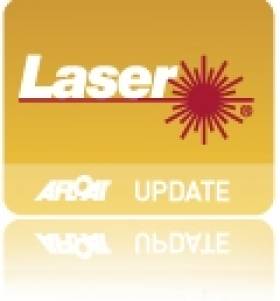Displaying items by tag: Paul Keane
Strong Irish Team Contest Laser Master Worlds in Hyeres
#lasermasters – There's a strong contingent of Irish competing in the Laser Masters Worlds taking place from the 4th - 11th October in Hyeres, France this week.
The event has broken records for the number competing which topped out at an eye watering 499.
The logistics and challenges for the event organisers of dealing with a fleet this size both onshore and afloat are daunting but COYCH are managing.
Masters fleets are divided by age brackets. The youngest competitors are 35 in the apprentice fleet. At 45 these "young guns" graduate to Masters and so on as the bands continue up in blocks of 10 years.
The Irish team consists of Worlds stalwart and Great Grand Master Denis O'Sullivan. Chris Arrowsmith from RStGYC is in the Grand Master category. Ed Rice and Nick Walsh from Royal Cork YC along with Colin Galavan from RIYC and Kevin Currier from Ballyholme are in the Masters fleet. The team is rounded out by three Apprentice Masters, Dan O'Connell from RCYC, sailing coach Thomas Chaix and Paul Keane also from RIYC.
The weather has not played ball for the organisers who have been plagued by light airs and blue skies. Nice for the beach, of which there are plenty, but not for sailing. After two days of light racing some fleets have only two results but the Great Grand Masters have yet to finish a race.
After coming second in the Pre Worlds and winning the practice race Thomas Chaix was confident going into the first race but there is no quarter being given in the Apprentice fleet which includes 2 current and a very large percentage of ex Olmypians. The start line and contested mark roundings are not for the faint of heart.
The Masters fleet is around 130 boats so it's further split into Yellow and Red fleets. In the Red fleet Nick Walsh is on the hunt for some good results after a very successful domestic sailing season. Nick's sparring partner from home, Ed Rice is in the Yellow fleet and after a shaky first race put the demons behind him to score a decent result in the 2nd.
Well known RStGYC sailor Chris Arrowsmith had a middle of the road result in the first race but a strange abbreviation "PTSr" appeared beside his and others scores. This seemed to be "Penalty turns, retrospective" i.e. you're not whistled by the jury on the water but they take your number and penalise you after the race. An Australian team sailor was also penalised in this way and took the RC to the protest room where it seems to have been dropped. In the second race Chris scored a very respectable 11th. Onwards and upwards.
The forecast for the next few days is quite mixed. Last night a big rainstorm went through the area and there is a current "Orange" weather alert. Tomorrow the sun is due to come back and the wind is forecast in the 12-18kt range from a stable Easterly direction. This means waves in Hyeres Bay. Sun, Waves and Breeze for a Laser Sailor is better than a lotto win.
There is so much more to say about this event I could go on but I've just heard a gun and the AP is being lowered so I've got to go and get out on the water. For a very well observed flavour of the "internationality" of this event read USA team member Joe Berkeley's piece here






























































